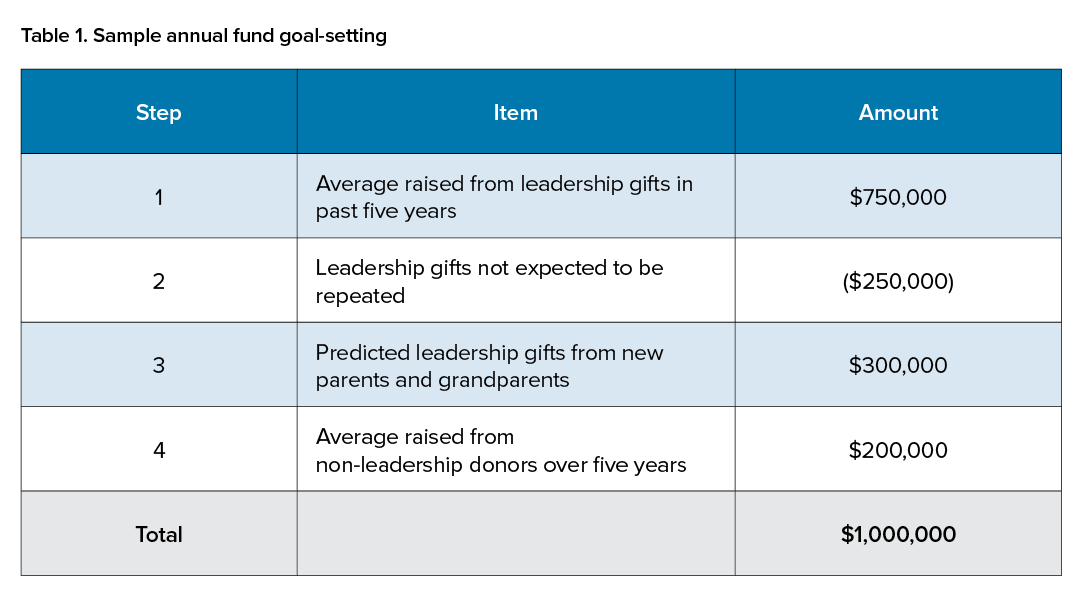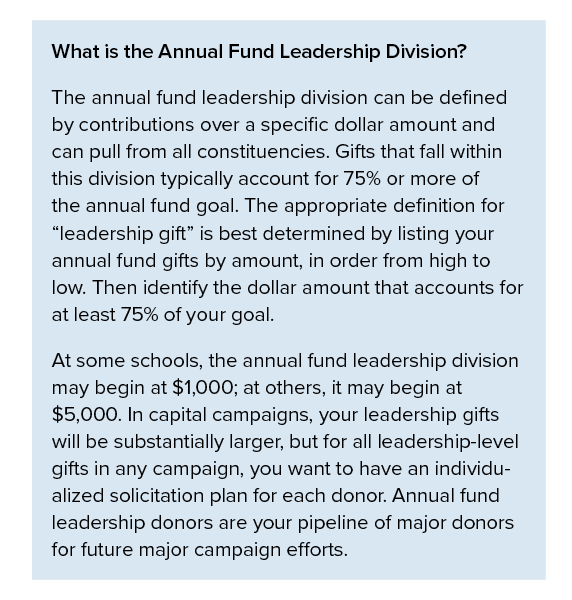

Volume 50 No. 4 ● April 1, 2025 ● Member Sneak Peek
As your school’s development director, you know that setting the right annual fund goal is critical to your program. Despite that, at some schools, the annual fund goal is set by the board and school head to “fund the gap” between expenses and expected income. But this is not the right way to establish the goal for an annual fund. Instead, use accurate data from past fundraising successes to set a challenging but achievable goal.
What not to do
Why does ISM say that you should not base your annual fund goal on funding the gap? First, by doing so, you start with a faulty assumption — that there will be a gap at all. Instead, ISM recommends that schools cover 100% of operational expenses with “hard” income (i.e., income from tuition, fees, endowments and reserves, and auxiliary sources like event tickets, bookstore receipts, summer programs, facilities rentals, and before- and after-school programs). In contrast, “soft” income (i.e., income from fundraising) should support enhancements to the program or improvements to the facilities rather than essential operations.
Realistically, the majority of schools still depend on the annual fund to balance their operating budgets. If your school is one of those, and you are basing your annual fund goal on a number that will fill the gap, you may be coming to an inaccurate understanding of your fundraising capacity. Furthermore, your fundraising efforts may lack a clear strategy, leading to inconsistent and unpredictable results. Your development office’s credibility may be undermined because of unrealistic expectations about what can be accomplished through fundraising. And volunteer and staff engagement may suffer as you fail to cultivate an institution-wide philanthropic culture — a “culture of giving and getting involved.”
A better way
Instead of filling the gap, develop an annual fund goal that aligns with your school’s strategic financial plan and is based on data-driven insights. ISM recommends that annual fund goals be based on four metrics:
- Historical leadership giving. To find this number, calculate the average amount raised over the past three to five years from donors who belong to your “leadership division.”
- Leadership gift non-repeats. Subtract leadership-level gifts made in previous years that are not expected to be repeated. This list may include parents and grandparents of graduating seniors and other non-returning students.
- Anticipated leadership giving from new families. To find this number, calculate the average leadership giving from new parents and grandparents over the past three to five years.
- Average amount raised from non-leadership donors. Finally, calculate the average total funds raised from non-leadership donors over the past three to five years.
This process will help establish a conservative baseline goal for the budget.
Table 1 shows a sample annual fund goal of $1 million based on these four metrics. We recommend using three- to five-year averages to account for retention rates, giving anomalies, and unusual years.

The development office should then develop an internal goal based on key measurable areas of opportunity — increased leadership giving, increased donor retention, and new donor acquisition. This internal goal should be a stretch goal with specific tactics for implementation. Indeed, the most important factor in establishing the amount of any fundraising increase is to answer this question: What strategies will we implement to increase giving this year? These strategies should be based on existing metrics — improving the previous year’s figures (e.g., in new leadership gifts or annual fund participation) by specific percentages based on specific strategies.
This approach allows the fundraising staff to work toward achievable goals that take into account the school’s need, past fundraising results, and strategies for growth. It provides a framework for raising needed funds in the short term and cultivating long-term relationships with donors.
 With overall fundraising goals based on historical giving trends and donor potential, the school’s budget will be based on a rational prediction of income rather than on wishful thinking. And while future fundraising results can never be guaranteed, data-driven planning leads to stronger donor engagement, greater fiscal discipline, and more sustainable fundraising success.
With overall fundraising goals based on historical giving trends and donor potential, the school’s budget will be based on a rational prediction of income rather than on wishful thinking. And while future fundraising results can never be guaranteed, data-driven planning leads to stronger donor engagement, greater fiscal discipline, and more sustainable fundraising success.
Finally, rational goal-setting based on past results lays the groundwork for board members to be reminded about their place in building the school’s culture of giving and getting involved — both the importance of their personal generosity and their role in securing annual contributions from others.
The bottom line: Strategic alignment with financial planning
By setting an annual fund goal based on historical performance, donor demographics, and strategic initiatives, schools can shift away from reactionary fundraising and toward a sustainable, mission-driven approach. The development office, in turn, can focus on building strong donor relationships and executing high-impact campaigns rather than scrambling to fill budget gaps. The resulting strong development program will be supported by strategies designed to meet the newly budgeted goals.
School heads and boards play a crucial role in supporting the development office by understanding these distinctions, embracing a strategic fundraising approach, and ensuring that annual fund goals reflect realistic growth opportunities rather than financial desperation.